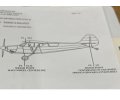AirBorn
New Member
I’m a new owner of a 1989 A1 Husky. Is anyone else having this problem?
My question is about “weight and balance“ why is it way off?
It was weighed in 2018 with full fuel and oil. The new CG is 70.60 @ 1290lbs after deducting 300lbs for fuel. When it was new from the factory the CG was 73.4”. I am NOT able to get the CG in the envelope with 50lbs of cargo in the back and I’m 220 in the front seat. it flys just fine but landing I have full up nose trim and the stick is still very heavy.
Any help would be appreciated. I am scheduled for a new W&B next week, but I’m going to defuel the plane, and strip her down, before weighing it.
My question is about “weight and balance“ why is it way off?
It was weighed in 2018 with full fuel and oil. The new CG is 70.60 @ 1290lbs after deducting 300lbs for fuel. When it was new from the factory the CG was 73.4”. I am NOT able to get the CG in the envelope with 50lbs of cargo in the back and I’m 220 in the front seat. it flys just fine but landing I have full up nose trim and the stick is still very heavy.
Any help would be appreciated. I am scheduled for a new W&B next week, but I’m going to defuel the plane, and strip her down, before weighing it.

